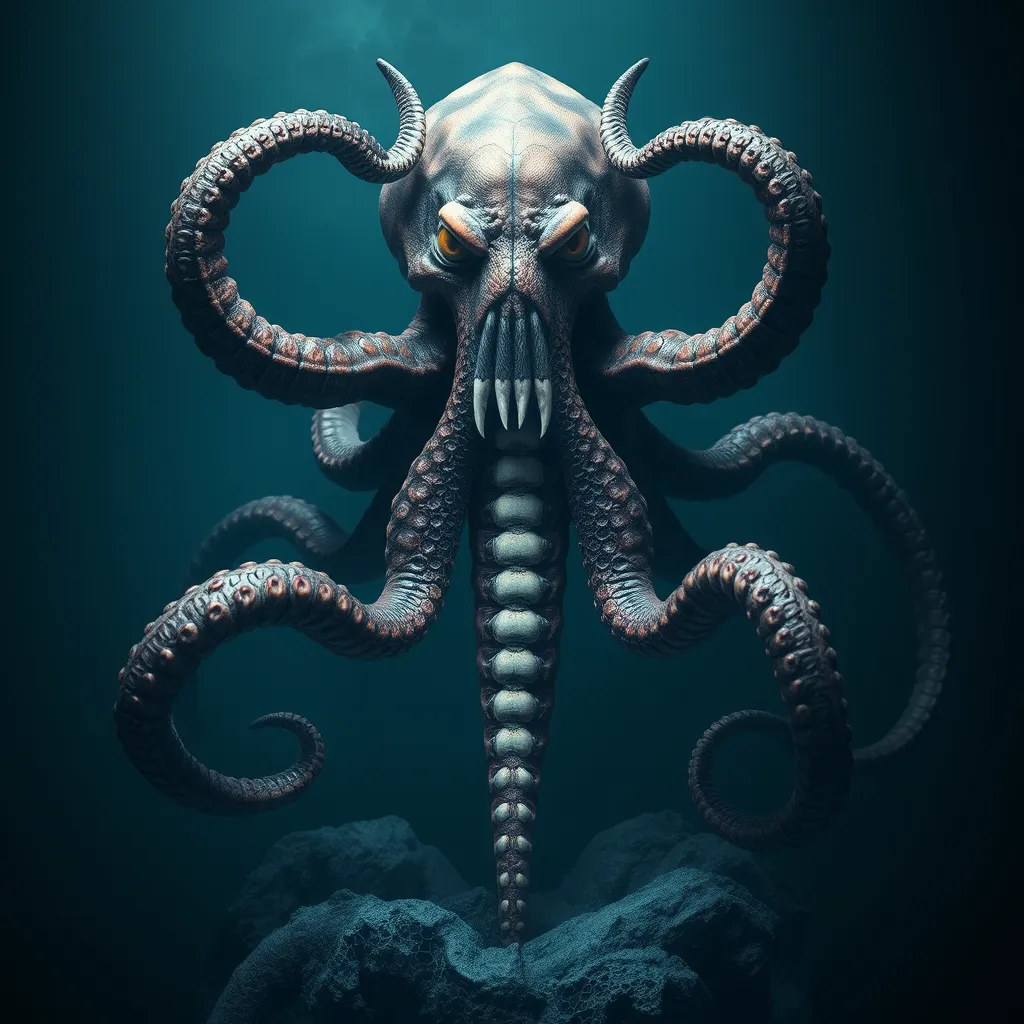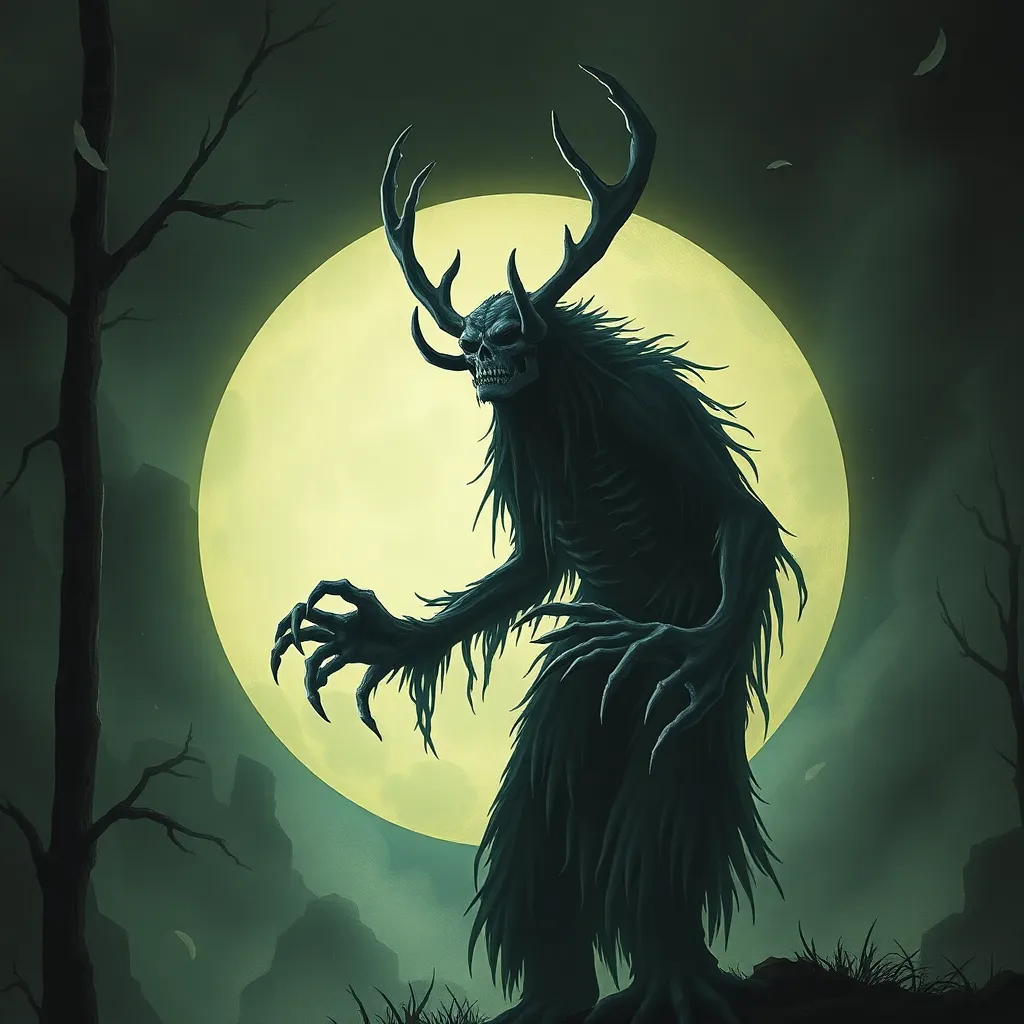The Kraken’s Anatomy: Unveiling the Monster’s Physical Characteristics and Structure
I. Introduction
The Kraken, a legendary sea monster, has captured the imaginations of people for centuries. Originating from maritime folklore, this colossal creature has been depicted in various forms throughout literature and art. Understanding the anatomy of the Kraken not only enriches our appreciation of this mythical being but also sheds light on the broader themes of nature and imagination.
This article aims to delve into the physical characteristics and structure of the Kraken, exploring its historical context, anatomical features, sensory systems, and the behavioral implications of its unique anatomy.
II. Historical Context of the Kraken
The origins of the Kraken myth can be traced back to ancient maritime cultures, particularly in Scandinavia, where sailors spoke of a monstrous cephalopod lurking in the depths, capable of dragging entire ships under the waves.
A. Origins of the Kraken myth in maritime folklore
Stories of the Kraken likely stem from encounters with giant squids and octopuses, which sailors misidentified as the legendary creature. These tales evolved over time, blending facts with fantasy.
B. Evolution of the Kraken’s depiction through the ages
Initially described as a giant octopus or squid, the Kraken’s depiction has varied across cultures and eras:
- In early accounts, it was often portrayed as a monstrous creature with a vast body and long tentacles.
- Later interpretations, especially in the 19th century, emphasized its terror-inducing nature, illustrating it as a ship-destroying leviathan.
- Modern depictions often romanticize the Kraken, merging horror with allure in films and literature.
C. Cultural significance of the Kraken in different societies
The Kraken has significant cultural weight, symbolizing the unknown and the fears of the deep sea. In various societies, it embodies the unpredictability of nature and human vulnerability.
III. Physical Characteristics of the Kraken
The Kraken’s physical traits are a blend of awe-inspiring scale and terrifying functionality. Here, we explore its most notable features.
A. Size and scale – estimates and descriptions
Estimates of the Kraken’s size vary greatly, often described as being anywhere from:
- 50 feet to over 100 feet in length in various legends.
- Some accounts suggest it could be as large as a small island.
This enormity contributes to the creature’s fearsome reputation and its ability to capsize ships.
B. Tentacles and appendages – structure and function
The Kraken is most famously known for its long, powerful tentacles. These appendages serve multiple purposes:
- Capturing prey with immense strength.
- Propelling itself through water using a combination of muscular contractions and jet propulsion.
- Grasping objects, including ships, allowing for its terrifying attacks.
C. Skin texture and coloration – adaptations to the marine environment
The skin of the Kraken is often depicted as being tough and textured, resembling that of cephalopods. Its coloration may range from dark, murky hues to vibrant patterns, aiding in camouflage against predators and prey alike.
IV. Internal Anatomy
Understanding the internal structure of the Kraken reveals how it functions as a formidable predator in the depths of the ocean.
A. Musculoskeletal system – how the Kraken supports its massive body
The Kraken’s musculoskeletal system would likely consist of:
- A flexible yet strong skeletal structure, allowing for both agility and power.
- Robust muscles that enable the creature to propel itself and manipulate its tentacles with precision.
B. Circulatory and respiratory systems – adaptations for deep-sea living
Adapting to the pressures of the deep sea, the Kraken’s circulatory system may have evolved to be highly efficient, with:
- A closed circulatory system to manage blood flow effectively.
- Gills adapted for extracting oxygen from water in low concentrations.
C. Digestive system – feeding habits and prey capture
The Kraken is often portrayed as a carnivorous beast, with a complex digestive system capable of:
- Consuming large prey, including fish and even whales.
- Utilizing a beak-like mouth to tear flesh before digesting it through specialized enzymes.
V. The Kraken’s Sensory Systems
A creature of the deep, the Kraken possesses unique sensory adaptations that allow it to thrive in an environment with minimal light.
A. Vision – adaptations for low light conditions
While traditional depictions of the Kraken often emphasize its size, its vision is equally crucial. It likely possesses:
- Large, well-developed eyes capable of detecting movements in the dark waters.
- Specialized retinas to enhance low-light vision.
B. Hearing and echolocation – navigating the deep sea
To navigate the darkness of the ocean, the Kraken may utilize:
- Highly developed hearing to detect sounds from prey and predators.
- Possible echolocation abilities, similar to some modern marine mammals, to understand its surroundings.
C. Other senses – taste, touch, and chemical detection
The Kraken likely relies on a combination of senses to thrive in its environment, including:
- Touch sensitivity in its tentacles to explore and interact with its environment.
- Advanced chemical receptors to detect prey or changes in water composition.
VI. Behavioral Implications of Anatomy
The physical features of the Kraken significantly influence its behavior, particularly in hunting and social interactions.
A. How physical features influence hunting strategies
The Kraken’s size and tentacle strength allow it to adopt various hunting strategies:
- Ambush tactics, utilizing camouflage to surprise prey.
- Active pursuit, leveraging speed and agility in open waters.
B. Social behavior and interaction with other mythical sea creatures
While often depicted as a solitary creature, the Kraken may interact with other sea monsters, leading to complex social dynamics:
- Territorial behavior, claiming vast areas of the ocean.
- Potential alliances or rivalries with other mythical beings.
C. Implications for survival in a hostile environment
The adaptations of the Kraken’s anatomy are crucial for survival, allowing it to thrive in the unpredictable and often hostile environment of the deep ocean.
VII. The Kraken in Popular Culture
The Kraken has not only remained a staple of mythology but has also permeated modern culture in various ways.
A. Depictions in literature, film, and art
From classic literature to blockbuster films, the Kraken is a recurring figure:
- In literature, it appears in works like Jules Verne’s “Twenty Thousand Leagues Under the Sea.”
- In film, it has been featured in franchises like “Pirates of the Caribbean.”
- Artistic representations often emphasize its monstrous form, evoking fear and fascination.
B. Influence on modern interpretations of sea monsters
Modern interpretations of the Kraken have shaped how we view sea monsters today, often blending horror with intrigue in a way that encourages exploration of marine mysteries.
C. The Kraken’s role in contemporary marine biology discussions
The fascination with the Kraken has spurred interest in real-life giant cephalopods and the mysteries of the ocean, prompting discussions in marine biology about the true depths and inhabitants of our seas.
VIII. Conclusion
The Kraken’s unique anatomical features—from its formidable tentacles to its adaptations for deep-sea living—illustrate the creature’s complexity and allure. Its enduring presence in folklore and culture highlights humanity’s fascination with the unknown and the mysteries of nature.
As we continue to explore the realms of mythological creatures, the Kraken serves as a reminder of the rich tapestry of stories that shape our understanding of the world and our place within it. The exploration of such legendary beings invites a



